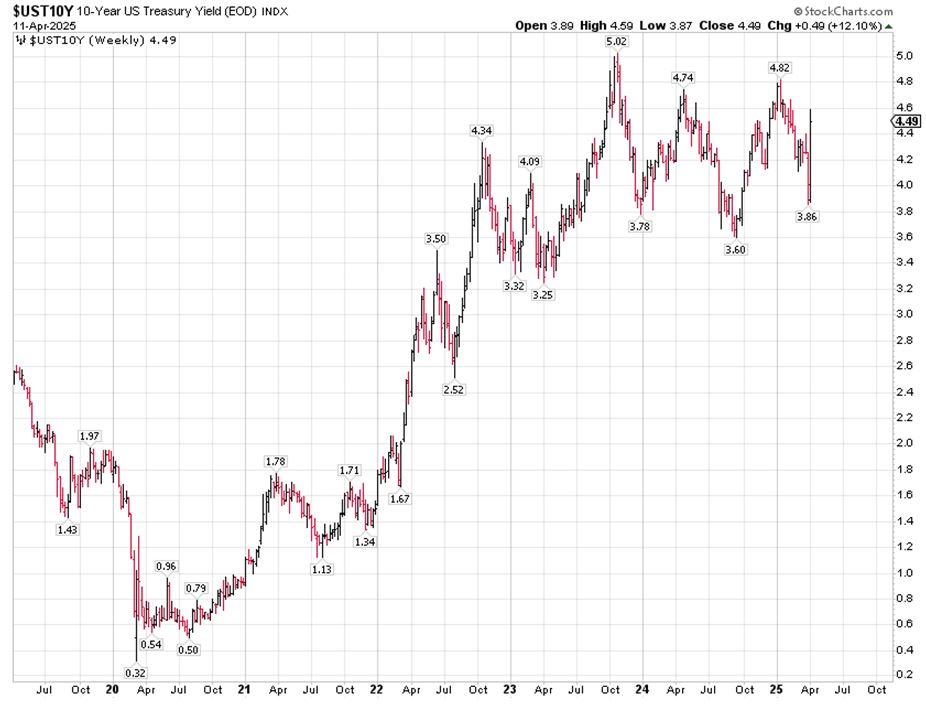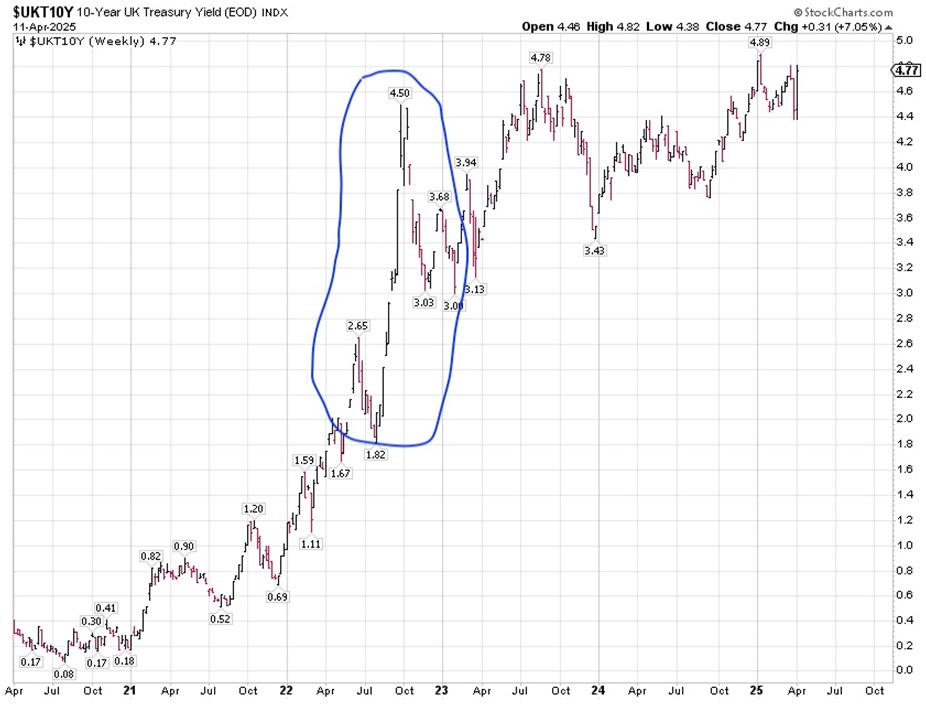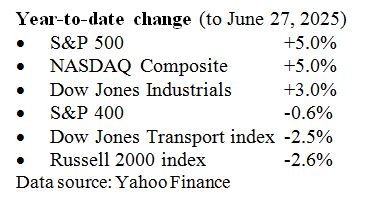by Ivan Martchev
April 15, 2025
It would appear that the bond market is forcing President Trump’s hand to walk back the steep tariffs he imposed on April 2nd. Not only did most of the reciprocal tariffs (other than those for China) get put on hold for 90-days, as of mid-last-week, but late Friday night iPhones and all kinds of electronics got major tariff exemptions (including from China). As I write this on Sunday, it is likely that the stock market gaps up on Monday. What is more interesting is what happens to the Treasury market, as any trading above 4.58% on the 10-year Treasury – Friday’s intra-day high – would likely be unwelcome by stock investors.
Graphs are for illustrative and discussion purposes only. Please read important disclosures at the end of this commentary.
The U.S. Treasury market is revolting against the threat of high tariffs. Some say this came from European bond traders afraid of tariff inflation, but curiously the Chinese keep a large amount of their Treasury holdings with custodians in Europe. It could be both, as the Chinese would love to find a “pressure point” in the Trump administration to gain negotiating leverage. It could be U.S. institutions that cannot calibrate the inflation impact of a trade war, so they are selling first and asking questions later.
Whatever it is, last week’s surge in Treasury yields was of historic proportions. The weekly rise was from Monday’s open of 3.98%, to Friday’s close of 4.49, rising a total of 51 basis points, or 0.51%.
Graphs are for illustrative and discussion purposes only. Please read important disclosures at the end of this commentary.
I remember well what happened in 2022 with the shortest-serving Prime Minister in British history. Former Prime Minister Liz Truss announced unfunded tax cuts. She sacked her Chancellor of the Exchequer and investors voted with their feet, so she ended up being PM for only 49 days. The Bank of England had to intervene in the UK gilt market in the midst of a tightening campaign to stop the panic.
None of this is likely to happen any time soon to the Trump administration, as things haven’t gotten that much out of hand, but markets don’t like tariffs or uncertainty, and they are getting plenty of both. With the reciprocal tariffs now put on hold, we saw a strong rebound. With high Chinese tariffs getting an exemption for smartphones and other electronics, I think we will see a further rebound, for the time being.
These 90-day delays, plus some exemptions, are not “trade deals,” so the level of uncertainty remains high. The stock market would much prefer to see official trade deals being signed, and it would absolutely adore resolution to any meaningful trade situation with China, which I don’t expect to come quickly. If the trade situation stops being front page news and the economic numbers don’t deteriorate, then we will see some big gains for stocks. But those are very big “ifs” in a fluid situation that can break either way.
The stock market is seeing a number of indicators which could imply intermediate-term buy signals, the same way those were pointing to further gains before April 2nd. Clearly, rapid escalation of trade tension can override such positive setups. On the other hand, further de-escalation and a way out for both Mr. Trump and Mr. Xi could be viewed as de-escalation and have the potential for further stock market gains.
I would love to know how long this trade drama will last, but by the looks of things China appears to be digging in their heels. I doubt this trade war will be over in the next month or two. In that time frame, the hard data on the U.S. economy needs to remain strong for this to be a short-term sell-off. That means strong employment reports, low weekly jobless claims and strong PMI indicators, etc.
Whatever happens, you don’t want to see 10-year Treasury yields above 5%, as that – in and of itself – has the power to slow the U.S. economy via market-driven monetary tightening. We have not closed above 5% in 18 years and that psychological barrier may be too much for investors.
The post 4-15-25: Could the Surge in Treasury Yields Be the Market’s “Shot Across the Bow?” appeared first on Navellier.








